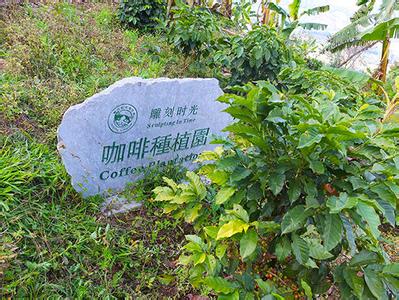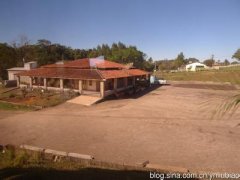Light and pure sweet Costa Rican Tara beads boutique coffee beans origin development history and culture brief introduction

Coffee was introduced to Costa Rica from Cuba in 1729, and today its coffee industry is one of the most well-organized in the world, producing up to 1700 kilograms per hectare. Costa Rica has a population of 3.5 million, but coffee trees number 400 million, and coffee exports account for 25% of the country's total exports. Costa Rica's volcanic soils are fertile and well drained, especially in the Central Plateau, where the soil consists of successive layers of ash and dust. Costa Rica was thus the first country in Central America to grow coffee and bananas for commercial value. Coffee and bananas are the country's main exports
Costa Rican coffee is full of particles, with ideal acidity and unique aroma. Costa Rica's coffee industry, formerly controlled by the Instituto del Café de Costa Rica (ICAFE), has been taken over by the Official Coffee Council (Oficin del Café). Among coffee exports, those deemed substandard are colored with blue vegetable dye before being recycled for domestic sale. Coffee consumed domestically (dyed blue or undyed) accounts for about 10% of the total production, and local coffee consumption per capita is twice that of Italy or the United States. Excellent Costa Rican coffee is called "extra hard beans" and can be grown at altitudes above 1500 meters. Altitude has always been a problem for coffee growers. The higher the altitude, the better the beans, not only because higher altitudes increase the acidity of the beans and thus enhance the flavor, but also because the lower night temperatures at higher altitudes can slow down the growth of trees and thus enhance the flavor of the beans. In addition, due to the high altitude drop caused by sufficient rainfall, coffee tree growth is very favorable.
Costa Rican coffee is all Arabica beans, washed method, its style is bright, full of aroma, clear as wind chimes in the breeze, and mild acid, sweet quite good.
Because of the sweet taste, even if the coffee is cold, it is also very good to drink, which is a major feature of Costa Rica coffee. Therefore, it is recommended that you taste Costa Rican coffee with only a small amount of sugar and creamer in order to enjoy its girlish pure flavor. Coffee was introduced to Costa Rica from Cuba in 1729, and today its coffee industry is one of the most well-organized in the world, producing up to 1700 kilograms per hectare. Costa Rica has a population of 3.5 million, but coffee trees number 400 million, and coffee exports account for 25% of the country's total exports. Costa Rica's volcanic soils are fertile and well drained, especially in the Central Plateau, where the soil consists of successive layers of ash and dust. Costa Rica was thus the first country in Central America to grow coffee and bananas for commercial value. Coffee and bananas are the country's main exports. In Costa Rica, Arabica coffee trees are grown, improved to make the quality of the beans better and more stable; coffee trees are pruned to a height of about 2 meters to facilitate harvesting; coffee is eaten as the seeds in the fruit are brewed with water. After picking the green coffee beans, the seeds (i.e. coffee beans) can only be roasted after removing the peel, pulp, seed membrane and sunlight exposure. Some processes can be replaced by machines, which increases the speed of coffee production. However, there is no machine to pick coffee. It must be manually used.
Costa Rican coffee is full of particles, with ideal acidity and unique aroma.
Costa Rica's coffee industry, formerly controlled by the Instituto del Café de Costa Rica (ICAFE), has been taken over by the Official Coffee Council (Oficin del Café). Among coffee exports, those deemed substandard are colored with blue vegetable dye before being recycled for domestic sale. Coffee consumed domestically (dyed blue or undyed) accounts for about 10% of total production, and local coffee consumption per capita is twice that of Italy or the United States.
Costa Coffee
Brazilian coffee fruit
Costa Rica, which produces one-third of the world's coffee in all grades and varieties, has a place in the global coffee market. Although Costa Rica faces many times more natural disasters than other regions, its arable area is enough to compensate.
There are many kinds of coffee here, but its industrial policy is large and cheap, so there are not many excellent coffee, but it is a good choice to mix other coffees.
One of the most famous is Mountain Costa Coffee, which tastes mellow and neutral. It can be boiled directly or mixed with other kinds of coffee beans. It is also a good choice.
Other types of Brazilian coffee, such as Rio, Parana, etc., can be produced in large quantities without too much care. Although the taste is rough, it is a kind of inexpensive coffee. Due to its distribution in all parts of the country, the solid quality varies, and there are its own standards (NO.2--NO.8 according to the number of impurities, NO.13--NO.19 according to the size of beans, divided into six grades according to taste). Almost all Arabica varieties are of good quality and stable prices, the most famous being Costa Rica, which has been a necessity for blended coffee since ancient times and is familiar to the public.
Excellent Costa Rican coffee is known as "extra hard beans" and can grow at altitudes above 1500 meters. Altitude has always been a problem for coffee growers. The higher the altitude, the better the beans, not only because higher altitudes increase the acidity of the beans and thus enhance the flavor, but also because the lower night temperatures at higher altitudes can slow down the growth of trees and thus enhance the flavor of the beans. In addition, due to the high altitude drop caused by sufficient rainfall, coffee tree growth is very favorable. The negative effect, however, is to increase the additional cost of transportation, which may well make coffee production unprofitable. Costa Rica's coffee has adopted new techniques to increase efficiency, including the use of "electric eyes" to select beans and identify irregular size coffee beans is an important source of Costa Rica's economy, introduced in 1808, has been cultivated for 200 years. Costa
The Colombian people say coffee has changed the country and has made a remarkable contribution to its rich environment. Although Colombia ranks third from the bottom in terms of land area in Central America, its economic environment is better than that of half of the countries. Because of its rich people and stable society, Costa Rica has more than 30 national parks.
Important Notice :
前街咖啡 FrontStreet Coffee has moved to new addredd:
FrontStreet Coffee Address: 315,Donghua East Road,GuangZhou
Tel:020 38364473
- Prev

A brief introduction to the description of flavor and aroma characteristics of high acidity Costa Rican Tarazhu boutique coffee beans
Costa Rican coffee has full particles, ideal acidity and unique strong flavor. Costa Rica's coffee industry, originally controlled by the Costa Rican Coffee Industry Company (InstitutodelCafdeCostaRica, ICAFE), has been taken over by the official Coffee Committee (OficinadelCaf). In exported coffee, those products that are considered to be of substandard quality are used in blue.
- Next

A brief introduction to the planting market price of Costa Rica Tarazhu boutique coffee beans with clear flavor
The coffee industry in Costa Rica has adopted new technologies to increase efficiency, including the use of electric eyes to select beans and identify coffee beans of irregular size as an important source of income for Costa Rica, which has been cultivated for 200 years since it was introduced in 1808. Costa Rica-related industries, Colombians say that coffee has changed the country, can enjoy a rich environment, coffee does contribute to outstanding
Related
- Detailed explanation of Jadeite planting Land in Panamanian Jadeite Manor introduction to the grading system of Jadeite competitive bidding, Red bid, Green bid and Rose Summer
- Story of Coffee planting in Brenka region of Costa Rica Stonehenge Manor anaerobic heavy honey treatment of flavor mouth
- What's on the barrel of Blue Mountain Coffee beans?
- Can American coffee also pull flowers? How to use hot American style to pull out a good-looking pattern?
- Can you make a cold extract with coffee beans? What is the right proportion for cold-extracted coffee formula?
- Indonesian PWN Gold Mandrine Coffee Origin Features Flavor How to Chong? Mandolin coffee is American.
- A brief introduction to the flavor characteristics of Brazilian yellow bourbon coffee beans
- What is the effect of different water quality on the flavor of cold-extracted coffee? What kind of water is best for brewing coffee?
- Why do you think of Rose Summer whenever you mention Panamanian coffee?
- Introduction to the characteristics of authentic blue mountain coffee bean producing areas? What is the CIB Coffee Authority in Jamaica?

